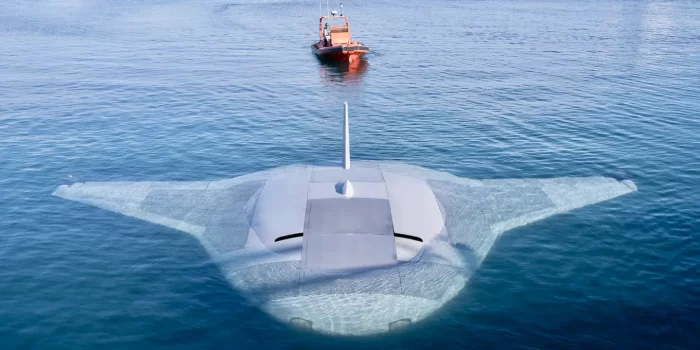More information on the mysterious Manta Ray robotic submarine has been revealed by DARPA, the US Department of Defense’s research organization that is renowned for pushing technological boundaries. This ground-breaking UUV, which is set to revolutionize undersea operations, has been made clear by recent successful sea trials.
The Manta Ray is a game-changer in naval technology because it puts endurance above speed, in contrast to typical submarines. Because of its modular architecture, it may be quickly deployed to any place without the need for specialist facilities and is transportable in regular shipping containers. Significant cost savings and operational flexibility result from this.
The Manta Ray’s principal contractor, Northrop Grumman, highlights the vehicle’s energy-saving capabilities. The UUV’s low-power propulsion technologies and “hibernation mode” extend its operational range. Its capabilities are further enhanced by sophisticated sensors, navigation systems, and state-of-the-art anti-biofouling materials, which guarantee long-term performance in challenging underwater settings.

Recent experiments effectively assessed the Manta Ray’s propulsion, steering, and general maneuverability while focusing on its underwater performance. Its field-deployable nature is further demonstrated by its successful disassembly and reassembly in California, which represents a major advancement in UUV technology.
“This testing validates the Manta Ray’s readiness for real-world operations,” stated Dr. Kyle Woerner, DARPA program manager. This “first-of-a-kind capability” marks a significant leap in UUV technology. The Manta Ray’s modularity and efficient design pave the way for a new era of adaptable and long-lasting underwater vehicles, significantly impacting future naval operations.
The Manta Ray has a wide range of potential uses. It could be applied to long-term scientific research projects as well as intelligence collection, surveillance, mine detection and clearance, underwater communication, and more. Its adaptability is further increased by the ability to customize payloads because to its modularity.
The successful sea testing of the Manta Ray indicate a substantial leap in underwater robotics, albeit the entire scope of its capabilities is still unknown. The breakthrough UUV that DARPA envisions might completely change the naval operations scene by bringing in an era of constant, flexible, and affordable underwater presence.


